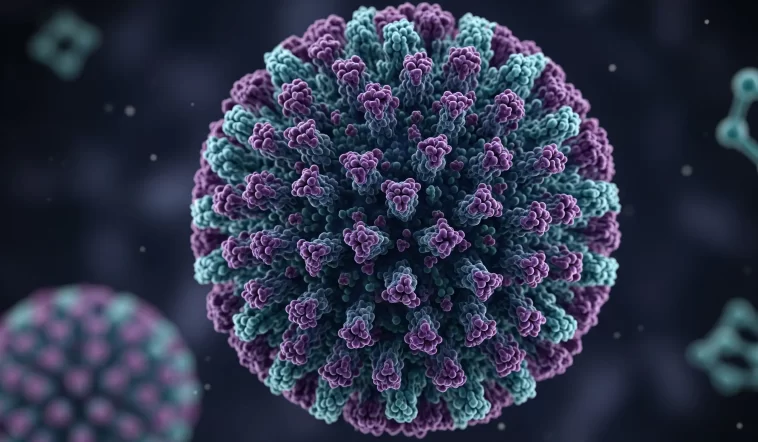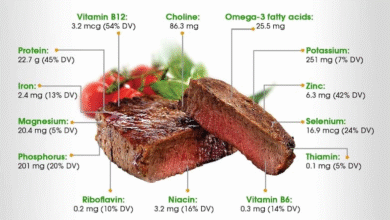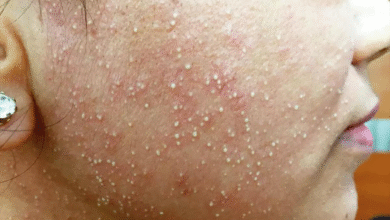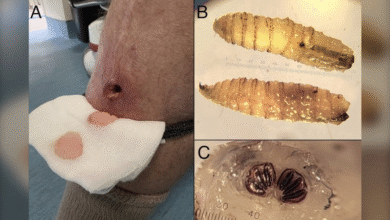Chikungunya Virus: CDC Travel Alert for Guangdong Province

Chikungunya virus is a rapidly spreading mosquito-borne illness that has recently led to a significant chikungunya outbreak in Guangdong Province, China, prompting the CDC to issue a Level 2 travel alert. With over 7,000 reported cases, health officials underscore the importance of mosquito prevention strategies to control the virus’s spread. Travelers heading to affected areas are urged to adhere to travel safety tips, including the use of insect repellents and protective clothing. While experts indicate that the likelihood of chikungunya spreading within the U.S. remains low due to limited Aedes mosquito presence, vigilance is still essential for those returning from endemic regions. Symptoms such as high fever and debilitating joint pain can severely impact quality of life but can be managed with over-the-counter medications to alleviate discomfort.
The chikungunya virus, often associated with tropical and subtropical climates, is known for causing significant health concerns, particularly during widespread outbreaks like the recent one in southern China. This compelling virus is established through the bite of infected mosquitoes, leading to debilitating symptoms that can linger for months. As emerging concerns affect global travel, it’s crucial for individuals to remain informed about potential health risks and take appropriate mosquito prevention measures while traveling. Various public health organizations, including the CDC, are continually monitoring the situation and providing travel safety tips to mitigate risks. Engaging in proactive behaviors can help protect both travelers and local populations from this infectious disease.
Understanding the Chikungunya Virus: Symptoms and Transmission
Chikungunya virus is primarily transmitted through the bites of infected Aedes mosquitoes, particularly Aedes aegypti and Aedes albopictus. Upon infection, individuals often experience symptoms such as high fever, severe headaches, and debilitating joint pain that can last for several days to weeks, and in some cases, these symptoms can persist for months. The immediate impact of the infection can severely affect a person’s quality of life, making understanding these symptoms critical for early detection and management.
It’s important to note that, while chikungunya can result in significant discomfort, most individuals recover without severe complications. The severity of symptoms can vary widely, with some people experiencing mild illness while others suffer from more intense manifestations. This variability can often lead to underreporting of cases, especially in regions where healthcare is limited. Understanding the nuances of chikungunya virus symptoms is vital for public health responses, especially when outbreaks occur.
Chikungunya Outbreak in Guangdong Province: Key Insights
Recently, Guangdong Province in China has reported over 7,000 cases of chikungunya, prompting the CDC to issue a Level 2 travel alert. This outbreak highlights the challenges faced by health authorities in managing vector-borne diseases in densely populated regions. The use of insecticides and drones to control the mosquito population underscores the proactive measures being adopted to curb the spread of this virus, demonstrating a multi-faceted approach to public health.
Travelers need to be particularly vigilant when visiting regions experiencing chikungunya outbreaks, like Guangdong Province. Keeping abreast of the latest travel safety tips, which may include avoiding peak mosquito activity times and selecting accommodations with proper mosquito netting, can significantly reduce the risk of contracting the virus. Educating travelers on the local risk levels and preventive measures can help mitigate the spread of chikungunya and other mosquito-borne diseases.
CDC Travel Alert: Implications for Travelers
The CDC’s Level 2 travel alert for chikungunya in Guangdong Province serves as a crucial warning for travelers, urging them to exercise increased caution during their trips. This alert not only informs potential travelers about health risks but also emphasizes the importance of mosquito prevention strategies. Such strategies may include applying insect repellents containing DEET, wearing protective clothing, and ensuring that accommodations are mosquito-proof.
Travelers are urged to stay updated on health alerts from reputable sources like the CDC before embarking on international trips, particularly to regions where chikungunya and other mosquito-borne viruses are prevalent. Understanding the symptoms and potential sources of infection is essential for timely intervention and care if sickness occurs during or after their travels.
Mosquito Prevention Strategies: Protecting Yourself from Chikungunya
Preventing chikungunya requires effective mosquito management and personal protective measures. Travelers and residents in endemic areas should implement mosquito prevention practices such as eliminating standing water around residences, using mosquito nets, and applying effective insect repellents. These practices not only safeguard individuals from chikungunya but also contribute to decreasing overall mosquito populations, which can help in curtailing outbreaks.
Additionally, community engagement in mosquito control initiatives can significantly enhance public health efforts. Local governments often promote educational campaigns educating the public on the importance of personal protection as well as community-wide mosquito management strategies. Collaboration between health organizations, local communities, and individuals can lead to more successful mosquito prevention and fewer instances of chikungunya transmission.
The Role of Aedes Mosquitoes in Chikungunya Transmission
Aedes mosquitoes play a pivotal role in the transmission of chikungunya virus. Their adaptation to urban settings and breeding habits in small bodies of stagnant water make these insects significant vectors for the virus. The presence of Aedes mosquitoes in various regions, including the potential for their introduction into new areas via international travel, raises concerns about possible outbreaks outside endemic zones.
Experts like Dr. Paul Sax highlight the low risk of chikungunya spreading in the U.S. due to the relatively limited presence of these mosquitoes. However, as travel patterns increase, especially from regions facing outbreaks such as Guangdong, maintaining vigilance against potential introduction of the virus becomes essential. Public health policies focused on monitoring mosquito populations and travel advisories will remain crucial in managing the threat posed by chikungunya.
Symptoms and Management of Chikungunya Infection
Recognizing the symptoms of chikungunya is key to managing the virus effectively. The most common symptoms include acute fever, severe joint pain, and rash, which typically progress rapidly after infection. While there is no specific antiviral treatment for chikungunya, supportive care through over-the-counter anti-inflammatories can alleviate some of the painful symptoms. Visitors to affected areas should be advised on how to self-manage symptoms and seek medical attention when necessary.
Long-lasting joint pain is one of the more debilitating aspects of chikungunya, affecting many individuals for months after initial infection. Understanding this potential long-term impact is crucial for healthcare providers, as it underscores the need for awareness and education about the disease. Additionally, maintaining proper hydration and rest can facilitate recovery, enabling those infected to return to normal life as soon as possible.
Travel Safety Tips for Visiting Affected Regions
Visitors to regions experiencing chikungunya outbreaks should prioritize their health and safety by adhering to travel safety tips. Benecial strategies include researching local infection rates, planning activities to minimize mosquito exposure, and bringing appropriate insect repellent and protective clothing. Checking for any updates or alerts from health organizations such as the CDC can also provide essential information for travelers.
Before travel, individuals should consider scheduling a consultation with a healthcare professional to discuss potential risks and vaccinations for preventable diseases. Such proactive measures not only inform travelers but also prepare them for scenarios they may encounter, helping to ensure a safer journey and potentially preventing the spread of chikungunya and other diseases.
The Importance of Community Awareness in Outbreak Mitigation
Community awareness plays a critical role in addressing chikungunya outbreaks effectively. Public health campaigns aimed at educating individuals about the virus, its transmission, and prevention techniques foster a well-informed community. Moreover, enhancing community involvement in vector control initiatives can contribute significantly to reducing mosquito breeding sites, thereby diminishing the risk of further outbreaks.
Educated communities are better equipped to implement preventive measures and recognize the signs of chikungunya infection, ultimately leading to quicker responses in case of future outbreaks. Collaboration between local health authorities and community members can enhance the overall resilience against mosquito-borne diseases, ensuring both immediate and long-term public health goals are met.
Future Directions: Research and Vaccine Developments for Chikungunya
Ongoing research into chikungunya virus aims to improve our understanding of its epidemiology, transmission dynamics, and potential treatments. With recent advances in vaccine development, scientists are optimistic about introducing effective vaccines in the future, which may provide a critical tool in combating the spread of chikungunya virus and preventing outbreaks.
A heightened focus on vector control measures and public health strategies will continue to be essential alongside these scientific advancements. Collaborative international efforts could be pivotal in addressing chikungunya on a global scale, ensuring that once effective vaccines are available, they are widely adopted and accessible to individuals in high-risk areas.
Frequently Asked Questions
What is the current chikungunya virus outbreak situation in Guangdong Province?
The chikungunya virus outbreak in Guangdong Province, China, has led to over 7,000 reported cases, prompting the CDC to issue a Level 2 travel alert. Health officials are implementing measures such as using insecticides and drones to control mosquito populations.
What precautions should travelers take regarding chikungunya virus?
Travelers should observe strong mosquito prevention methods, including applying effective bug repellent, wearing long-sleeved clothing, and following the CDC travel safety tips, especially if visiting areas with reported chikungunya outbreaks.
How can I avoid chikungunya virus when traveling to affected areas?
To avoid contracting the chikungunya virus during travel, it’s crucial to apply mosquito prevention strategies such as using insect repellent, staying in accommodations with air conditioning or screens, and avoiding outdoor activities at dawn and dusk when mosquitoes are most active.
What do experts say about the risk of chikungunya virus spreading in the U.S.?
Experts, including Dr. Paul Sax from Brigham and Women’s Hospital, suggest that the risk of the chikungunya virus spreading in the U.S. is low due to the limited presence of the Aedes mosquitoes required for its transmission. However, potential cases may occur when travelers return from highly endemic regions.
What are the symptoms of chikungunya virus?
Symptoms of the chikungunya virus typically include fever, headache, and severe joint pain, which can persist for weeks or even months. While there is no specific antiviral treatment, over-the-counter anti-inflammatories can help relieve symptoms.
Is there a vaccine available for chikungunya virus?
Currently, there is no vaccine available for the chikungunya virus. Therefore, prevention through mosquito control and personal protective measures are essential, especially in regions experiencing a chikungunya outbreak.
What should I do if I suspect I have chikungunya virus after traveling?
If you suspect you have contracted the chikungunya virus after traveling, seek medical attention and inform your healthcare provider about your travel history and symptoms. They can offer guidance on symptom management and necessary precautions.
| Key Point | Details |
|---|---|
| Current Outbreak | Over 7,000 chikungunya virus cases reported in Guangdong Province, China. |
| Travel Alert | CDC has issued a Level 2 travel alert regarding the outbreak. |
| Control Measures | Insecticides and drones are being used to manage mosquito populations. |
| Risk in the U.S. | Experts believe the risk of chikungunya spreading in the U.S. is low. |
| Transmission Factors | Limited presence of Aedes mosquitoes decreases local transmission risk. |
| Symptoms | Symptoms include fever, headache, and severe joint pain. |
| Treatment | No antiviral treatment available; over-the-counter anti-inflammatories can help. |
| Precautions for Travelers | Travelers are advised to use bug repellent and wear long clothing. |
| Expert Consensus | Prolonged chikungunya outbreaks in the U.S. are very improbable. |
Summary
Chikungunya virus is currently a significant concern due to the outbreak reported in Guangdong Province, China, prompting health authorities to act and issue travel alerts. With over 7,000 cases documented, the U.S. CDC’s Level 2 travel alert highlights the importance of awareness and prevention. Experts maintain that the risk of an outbreak in the U.S. remains low, provided that appropriate measures, such as the use of insect repellents and awareness of symptoms, are taken. As travelers return from affected areas, it is crucial to remain informed and vigilant against the chikungunya virus to minimize health impacts.




